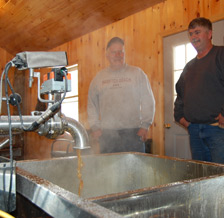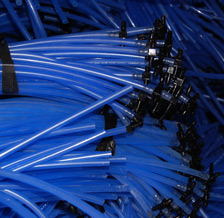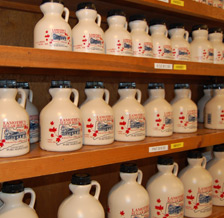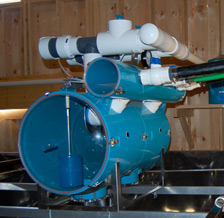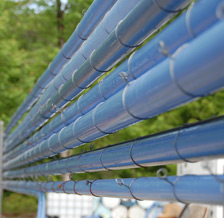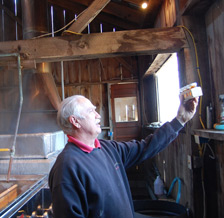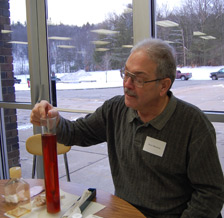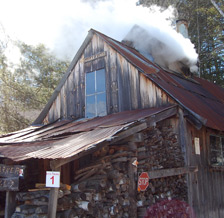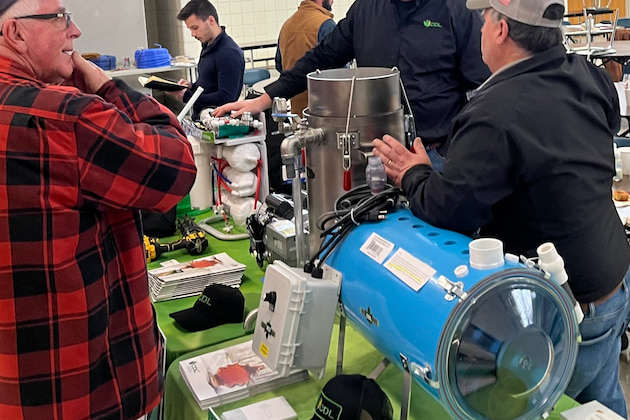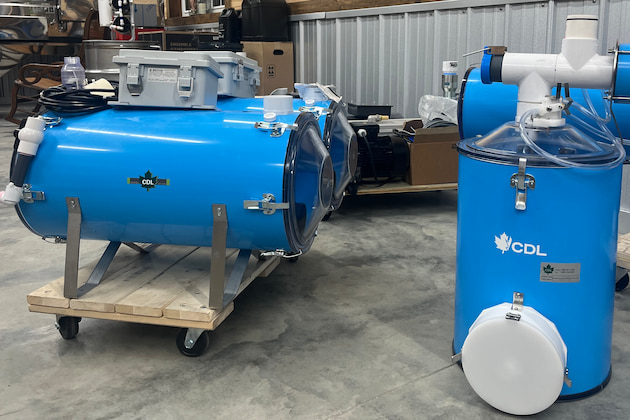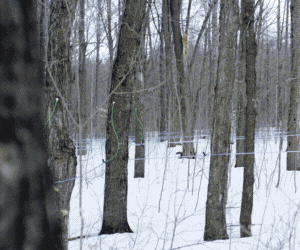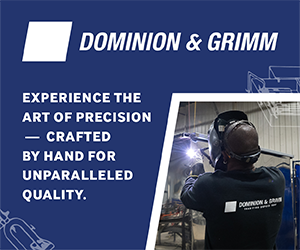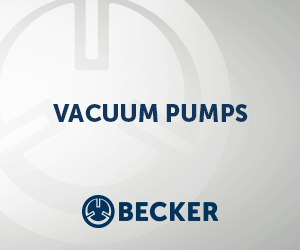Vacuum & RO
Electric releasers gain in popularity over mechanicals
More and more switchover to electric, more reliability
By SOPHIA SUTTON | MAY 28, 2025
KINSMAN, Ohio—Electric releasers are quickly taking the place of mechanicals.
Like traditional releasers, electric releasers (E.R.) gather sap from your sugarbush and pump it into your holding tank.
So, compared to the mechanical models, what makes an electric releaser special?
Obviously, if the name does not give you a hint, electricity is a requirement for the use of electric releasers.
The E.R. features a deep well pump that is located at the bottom of the releaser, which is turned on by electric probes.
The job of the probes is to activate the deep well pump to push the sap to the holding tank; this occurs once the sap reaches a certain level in the releaser chamber.
The E.R. can be set to either automatic or manual mode through the control box.
When it comes to the set-up of E.R.s, it is time to whip out that level because if it is not on a level surface you might as well throw all of your hopes and dreams for this releaser out the window.
An additional aspect of E.R.s is ensuring that your releaser is connected to the correct voltage amount.
Once properly set-up though, this style is fairly user-friendly with the main maintenance including cleaning it out, cleaning off the probes daily, and ensuring the pump screen is clear of debris.
Unlike the mechanical style, which can be placed on top of your tank, this style of releaser must be kept in a heated building.
This is necessary to prevent the releaser from freezing and allow it to work to its full potential.
So, if you are looking for an excuse to have a heated building in your woods for the days when you have been working in the cold for so long that your fingers feel like they are about to fall off, then this is the perfect type of releaser for you.
And, you do not need to go wild with the heating, an insulated building with a propane wall heater will do the trick.
CDL USA Operations Director, Jerad Sutton, who gave insight on the E.R. for this article, says that this type of releaser is not specifically geared toward a small or large operation.
Rather the specific needs of one’s operation might lead you to lean towards one model compared to the other.
Kenneth Kline a sugar maker, from Ohio, with 20 years experience starting from buckets and advancing from there, said, “it is definitely worth it switching to electric with a few thousand taps, even if it is a remote location.”
But Kline also says that at some point it is not worth the gas money to run a bigger generator if you have a smaller operation like 500 taps or less. But, if your pumphouse has electricity, he “would get one no questions asked.”
Aspects like the distance between your pump house and tank should be taken into account when deciding if an E.R. is for you.
For example, if your pump house and tank are far apart, an electric style would be beneficial because its deep well pump allows for sap to be pushed long distances to the tank location.
Sutton also brought attention to the fact that electric releasers are not “one-size-fits-all” and every operation has different needs.
The major difference between mechanical and electric is the price point, with E.R. being more expensive.
Just what you needed right? Another expense to add to the season's total.
But, do not worry, E.R.s have many features that might make it worth it!
Particularly, with continuous vacuum, the gift that keeps on giving! With a mechanical releaser, there is a pause in vacuum every time it releases but with an E.R. this does not happen.
The electric style of releaser maintains a stable amount of vacuum to the sugarbush, even when releasing sap.
This in turn, improves taphole quality which increases sap yield.
The manual mode setting on the E.R. can be quite useful as well; for instance, when you are cleaning out your releaser and pumping water through the lines.
The manual control over the pump gives you the opportunity to help it stay clean and free of debris while clearing out the lines.
Another upside to E.R.s is that some of the issues that come with mechanical styles are eliminated.
Troubles with float adjustment and lubrication are common challenges with mechanical models, but lucky for you this issue is eliminated because E.R.s do not have conventional floats.
Since switching some of his mechanical releasers to electric, Kline’s new releasers have worked “a hundred percent of the time.”
E.R.s are also more reliable than mechanical ones.
At the end of the day, electric models may cost more, but they have many appealing features.
Additionally, Kline remarks that it is all about “figuring your dollars” and making decisions that will benefit you in the long run.
E.R.s are dependable, user-friendly, and help keep those tapholes happy.
So, consider your operations needs and look into an E.R… and if you thought I was talking about emergency rooms this whole time, well, I am not sure what to tell you!

